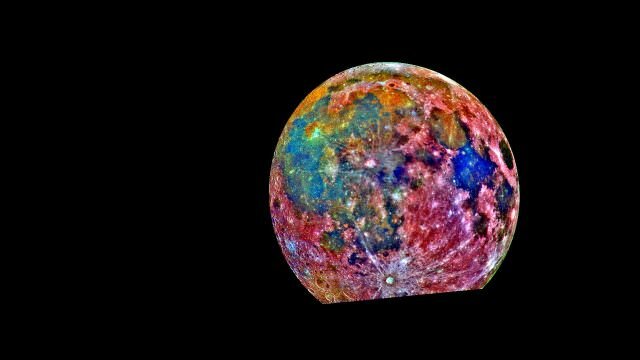Last updated July 5, 2018 at 9:54 am
Real time observations help us check our assumptions about how worlds are created.
This spectacular image from the SPHERE instrument on ESO’s Very Large Telescope is the first clear image of a planet caught in the very act of formation around the dwarf star PDS 70. The planet stands clearly out, visible as a bright point to the right of the centre of the image, which is blacked out by the coronagraph mask used to block the blinding light of the central star. Credit: ESO/Muller et al
An international group of astronomers using the European Southern Observatory in Chile have captured the first ever image of a planet as it forms.
The newly discovered exoplanet, named PDS 70b, has been characterised as a gas giant planet with a mass equal to several Jupiters. It is currently carving its way through the disk of debris surrounding a very young star.
As it orbits its star it is continuing to pick up more mass, allowing astronomers to actually watch how a planet forms as it happens. And that, they say, will be incredibly valuable to confirm our assumptions about how planets form, including exoplanets and those in our own solar system billions of years ago.
The birth of a new planet
Planets form from a disc of debris left over after the formation of stars, called a protoplanetary disc. Mass starts collecting together to form larger bodies, which attract more mass, until the process of accretion leads to a fully formed planet.
However, while there have been signals which may have been planets forming previously, it’s been unclear whether they were the beginnings of planets or just features of the protoplanetary disc itself.
Using the SPHERE instrument – which reveals hidden details near stars by taking advantage of differences in light polarisation, installed on ESO’s Very Large Telescope (VLT), astronomers turned their attention to the very young star PDS 70, a 5.4 million year old so-called T Tauri star around 370 light years away from Earth.
What made PDS 70 interesting is its surrounding disk of gas and dust that is 130 au (astronomical unit) wide – about two and a half times wider than our own Solar System. However, in that disk astronomers had spotted a large gap.
Gaps like the one seen around the young star are thought to be caused by the young giant planet collecting disc material on its orbit. By interacting with the disc, the planet also slowly changes its distance to the central star, meaning that over time it cuts a broad circular swathe through the gas and dust.
However, it has never before been seen in action.
SPHERE and the VLT allowed the group of astronomers to capture a detailed image of PDS 70, in which the forming planet is clearly visible at the inner edge of the gap of the disc.
“This discovery provides us with an unprecedented opportunity to test theoretical models of planet formation,” Andre Müller, who was the lead researcher on one of the two papers describing the discovery, enthused.
Planetary growing pains
Analysis of the planet revealed its gigantic size – at the moment it is at least a few times larger than Jupiter and is probably still growing. In addition, it has a surface temperature of at least 1000 °C, making it much hotter than any planet in our own Solar System.
While it’s not known how long the planet has been forming, it is obviously younger than its parent star.
The astronomers also report that the gas giant planet has a cloudy atmosphere, and takes about 120 years to orbit its host star.
The results have been published in the journal Astronomy & Astrophysics.
Link to the paper detailing the discovery of PDS 70 b
Link to the paper characterising the orbit and atmosphere of PDS 70 b































































































































































































































































